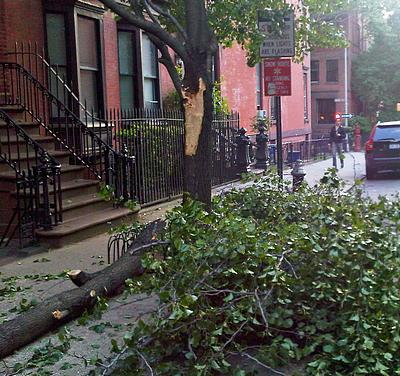Addendum: The wind blew down an entire tree on Clark Street, also between Henry and Hicks. See the comment thread following this post.
Update: Read the comment to this post by “MRG6726″, a qualified arborist who heads the team responsible for tree maintenance in this area, for a thorough discussion of the hows and whys of tree failure.



